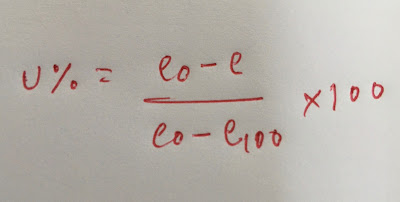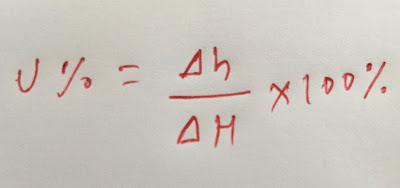CONSOLIDATION AND SETTLEMENT ANALYSIS
Soil
consolidation refers as the mechanical process by which soil changes its volume.
In other
words soil consolidation is the process in which the volume of soil decreases
due to removable of water molecules from the pores of the soil, It is the
function of the effective pore water pressure. When the water are removed from the soil
then soil particles are packed more closely to each other under the action of
static load. This term was introduced by the karl Tarzaghi and he is also known
as “the father of soil mechanics”.
When the
load is applied on the saturated soil there is an increase in the
pore water water pressure and this excess pressure is dissipated as water
drains away from the soil void’s and pressure transferred to the soil that
result in the settlement of soil.
DEFINITION OF SOIL CONSOLIDATION
Soil
consolidation refers the process by which the volume of saturated soil it may be
fully or partially saturate is decreases under pressure of static load.
Odeometre is the device that uses to measure the soil consolidation.
The
consolidation is mainly divided into three stages which are discussed below :-
1- Initial consolidation of soil
2- Primary consolidation of soil
3- Secondary consolidation of soil
INITIAL CONSOLIDATION OF SOIL
Initial consolidation is the sudden reduction in the volume of the soil
after load applied on the soil because of expulsion air from the voids of soil . the Initial consolidation is a elastic in nature.
PRIMARY CONSOLIDATION OF SOIL
Primary consolidation is the main phase of the soil , the compression
and expulsion of pore water are done in this phase . Primary consolidation is the
time settlement phenomenon that means it increase the passing times. Primary
consolidation is non-elastic in nature.
SECONDARY CONSOLIDATION OF SOIL
The Secondary consolidation stage starts after the Initial and Primary
consolidation of the soil. This stage starts when the air present in the soil
voids and pore water are expelled out.
It is complex process and thought to be done because of the adjustment
of internal structure of soil.
KARL TERZAGHI THEORY OF CONSOLIDATION
Karl Terzaghi who is known as the father of soil mechanics gives a
theory that is known as the Karl terzaghi theory of consolidation of soil .
This theory computes the amount of consolidation occurs in the soil, after any
given time t.
It based on the fact that consolidation is directly based on the
expulsion of pore water.
Assumption of Karl Terzaghi theory
1- The soil is Homogeneous and
Isotropic.
2- The flow is one dimensional that is
vertical.
3- The vertical flow may be one way
flow or two way flow.
4- The change will happen in depth.
5- The plastic readjustment of soil is
required.
6- Darcy’s law is valid
7- Permeability is constant over the
range of effective stress
DRAINAGE PATH
The drainage path is the
path through which water expelled out from the soil.
The drainage path of two
types
1-One way drainage path
2-Two way drainage path
ONE WAY DRAINAGE PATH
In one way drainage path water goes out of soil only through one way it may be upward or
downward flow.
The value of drainage
path is the thickness of soil mass.
TWO WAY DRAINAGE PATH
In two way drainage path water goes out of soil through both upward and downward flow.
The value of drainage
path is half the thickness of soil mass because water expelled out through two
path.
AS PER TERZAGHI :-

CV =
COEFFICIENT OF CONSOLIDATION
MV =
COEFFICIENT OF VOLUME OF COMPRESSIBILITY
K = HYDRAULIC
CONDUCTIVITY
DEGREE OF CONSOLIDATION
A degree of
consolidation is defined in terms of time and drainage path. A degree of
consolidation is directly Proportional to time and inversely proportional to square of drainage
path.
There are four cases
which described he degree of consolidation.
CASE-1
BASED ON THE SETTLEMENT
⃤ H = Ultimate settlement
at T=∞ after 100% degree of consolidation
⃤ G = It is the settlement
at time T Where (0<T<∞)
CASE-2
DEGREE OF CONSOLIDATION BASED ON THE VOID RATIO

e༠ = Initial
void ratio at t=0
e100 = void
ration after 100% degree of consolidation at t=∞
e = void ratio at any
time 0<t<∞
CASE-3
DEGREE OF CONSOLIDATION BASED ON PORE WATER PRESSURE
u༠ = pore water pressure at t=0
u100 = pore water
pressure at at t=∞ after 100% degree of
consolidation
TIME FACTOR
Time factor is defined
as the time which relates consolidation and the pore water pressure and time required to that
degree of consolidation.
Where,
CV = coefficient of consolidation
D2 = drainage
path
T = time required for
given drainage









0 Comments